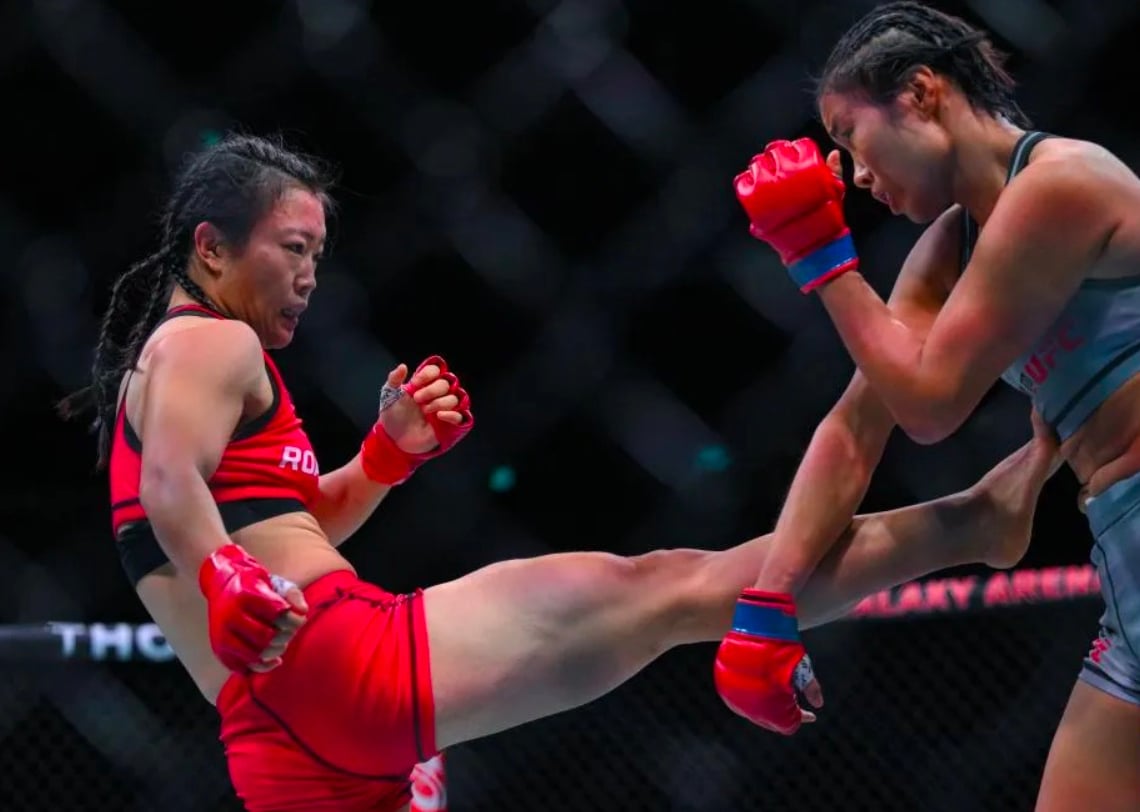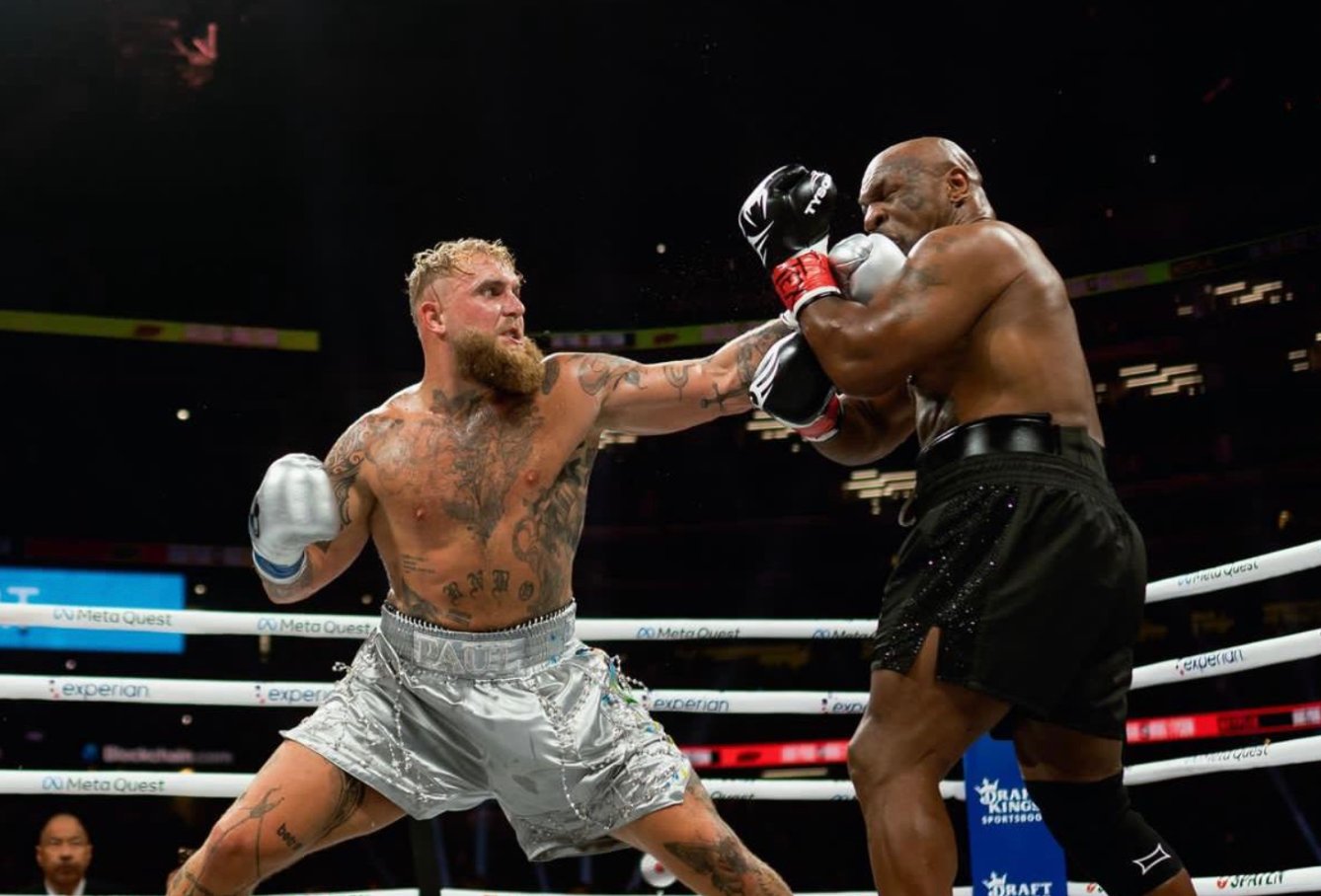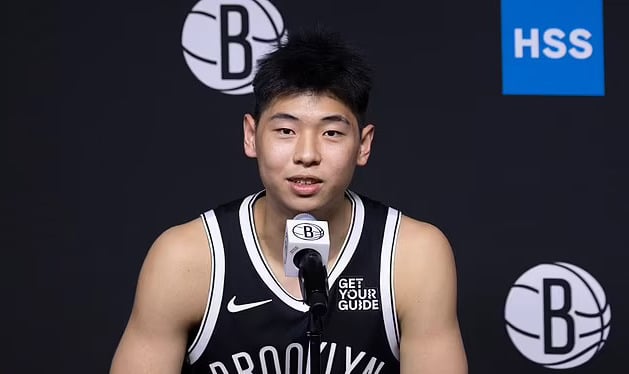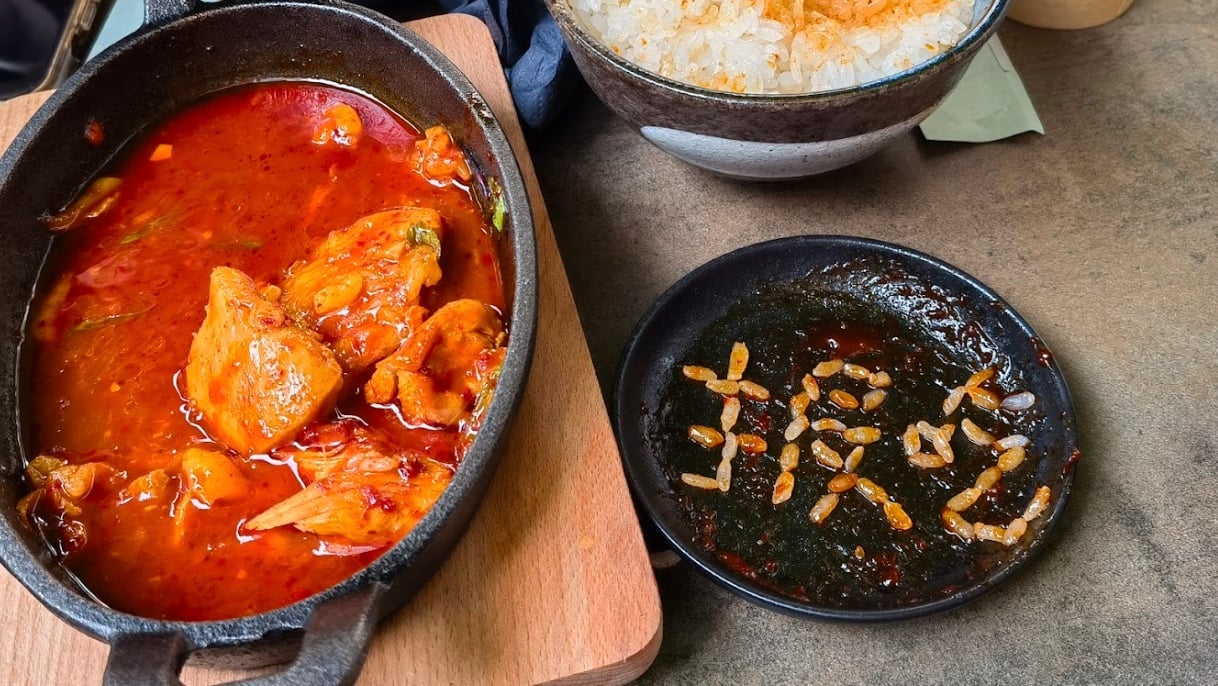Way of the Warrior is an ongoing series exploring the growth of MMA in China from a variety of unique perspectives. We’ll introduce the sport’s rising talents, burgeoning fanbase, and cultural ties to China. This story introduces you to rising 27-year-old MMA fighter Shi Ming.
Standing at 5’3” (160 cm), Shi Ming is one of three women currently training full-time at the UFC Performance Institute in Shanghai, with the expressed goal of becoming a professional UFC champion.
The strawweight fighter speaks passionately about the sport as a craft. Genial and soft-spoken, Shi discusses armlocks and submissions with such childlike excitement that, for a moment, you forget she is talking about inflicting immense pain on opponents in one of the world’s most physically intense combat sports.
Currently ranked fifth among women in China, Shi fell by decision in her last match against Wusamo Hailai in December 2021, which ended a super-hot six-win streak. She has previously fought under several promotions, including China’s Heroine FC and WLF W.A.R.S. and South Korea-based Road FC.
By our reckoning, it is no exaggeration to say the 27-year-old lives, eats, and breathes MMA, doing rigorous two-a-days with some of the world’s best martial arts coaches.
“I usually do a lot of things for fun. I like to travel, and I play the flute. Now, at the UFC Academy, I train, I sleep eight to nine hours a night, and when I’m not training or sleeping, I watch UFC fight videos,” she says with a laugh. “My focus is entirely on MMA.”
Rounding Out Her Repertoire
Shi began her athletic training in taekwondo at age 13, while living in the city of Kunming, in China’s Yunnan province, where the sport had become popular amongst kids. As an active child, the dobok (the standard uniform for taekwondo) and the head-height kicks “just looked so cool,” says Shi. She went on to earn many championships under her black belt.
Her strength in striking and kicks helped her win a few fights when she transitioned to MMA in college, “but I realized MMA involved a lot of wrestling and grappling,” she says. This pushed her to add wrestling to her armament.

To put it plainly, Shi is a full-on MMA nerd. She is a highly technical fighter with an encyclopedic knowledge of the sport and its athletes. She speaks of her favorite fighters and methods the way someone would gush about a new Magic: The Gathering deck, and she analyzes her own strengths and weaknesses with the same level of curiosity and excitement.
“I chose MMA as my career because it’s a lot like chess: I’m strategically reacting to my opponent’s moves, which is a lot of fun.”
MMA hadn’t gained popularity yet while she was in Kunming. “We had one wrestling group. We were just a bunch of wrestling aficionados who rented a space from a taekwondo club so we could train together,” she says.
Shi trained with the amateur boys at the club while taking on fights. “We were more like a team than a fight club.”
She then found her head coach, Iranian catch wrestling coach Bagher Amanolahi, who helped to improve her submission holds.
“Catch wrestling training has helped me the most. Most Chinese fighters have foundational styles in sanda or Brazilian jiu-jitsu, but BJJ actually isn’t the best suited for MMA,” says Shi.
She explains that while BJJ is more popular, catch wrestling has superior techniques in suppression and submission.
Shi tells RADII, “with catch wrestling, rather than both fighters starting on the ground, I grapple my opponent to the ground into a position where I have the upper hand, tire her out with a firm lock, and gain submission. It’s a much more efficient way to get to a submission.”
This tactic allows a smaller person like herself to take down larger opponents. Not accustomed to weight cutting, a controversial and even dangerous strategy among MMA fighters, Shi has often fought opponents who are bigger than her in the Octagon.
Shi never officially belonged to a fight club or training system prior to joining the UFC Performance Institute.
She trained mostly with men close to her size and weight, and it wasn’t until arriving at the Performance Institute that she began training with professional female fighters — and using proper weights. “Most of the gym equipment was completely new to me,” she tells RADII.
“For MMA, the most important factors are technique and training partners,” Shi says, adding, “the athletes here improve quickly because we are sparring with highly skilled partners.”
“The UFC Performance Institute is a real privilege. The facility is very comprehensive, and they offer athletes rehabilitation support to better recover from injuries. I recently injured my knee, and they are helping me heal faster and get stronger, getting me back into the Octagon as quickly as possible.”
Now she’s featured in UFC workout videos, demonstrating movements and exercises that professional MMA fighters use to stay in tip-top fighting shape, along with instructions from top international coaches.
Acupuncture: Needles or Jabs?
Unlike many professional athletes in China that compete on the international stage, Shi Ming didn’t attend a government athletics school.
These full-time sports schools have turned out many Olympic medalists over the years, and the programs cover their education, boarding, and food costs.
But Shi credits her ability to transition into MMA and the prospect of a long career to staying in regular public schools.
These prospective athletes at specialized sporting schools often trained more than six hours a day. Shi, meanwhile, studied uninterruptedly in regular schools and trained during weekends and school holidays.
“Many government school athletes have to retire in their early 20s and move on to other jobs because their bodies sustained too much wear and tear,” says Shi.
“My (gaokao, or college entrance exam) scores were just good enough, so I applied to a medical university,” she notes modestly. Her interest was mainly in sports medicine and rehabilitation.
“When I retire, I want to help other athletes recover,” Shi says, citing inspiration from the physical therapists she’s worked with at UFC Performance Institute.

Her chosen field? Acupuncture, a specialization that hasn’t failed to inform her fighting.
“During a face lock in catch wrestling, if you put pressure on parts of the face that have more nerve endings, or on a certain spot in the back, you can inflict a lot of pain,” she says.
She goes on to cheerfully explain that in acupuncture training, you learn which pressure points in the leg will cause someone to lose knee or ankle control and can help to destabilize your opponent — not quite a wuxia movie ‘Touch of Death,’ but definitely something that should worry her future opponents.
Another future career prospect: commentating. As a fighter and a fan of MMA, she’s eager to promote the sport. She named Daniel Cormier, better known as DC, as her inspiration. “He doesn’t just fight; he’s also an MMA analyst. Not every fighter knows how to talk about fighting.”
But retirement is a ways away, and Shi hopes to have a long and prosperous MMA career. Since MMA is such a technically demanding sport, she feels lucky to have been able to both study and train.
“It takes years of experience and great techniques to win an MMA championship,” she says.
This article was updated at 1:04 PM on April 6, 2022, to clarify that Shi Ming’s hometown is not Kunming, Yunnan province. She was born in Heilongjiang province and later moved to Yunnan.
Cover image designed by Haedi Yue.
















